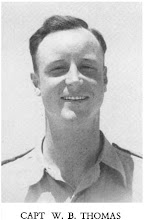Day 1 began with a tour of Pavlos Melas camp. Lt Col Tsiafitsas (the camp commandant) met us at the gate, and was very interested in Sandy's story and the map in Sandy's book. He rushed around and eventually the Army historian arrived with another map, showing the old layout.
They ummed and ahhd over the features, twisting the map here and there and trying to get a good fit. There are two churches on the edge of the site - one near the south-west corner, and the other on the north-west boundary.
The site is a jumbled mix of ruined barrack blocks - some long 2-storey classical buildings, and acres and acres of jumbled scrub. From the high point we had fantastic views across the city.
The TV cameras then arrived, and we were asked a series of questions - we then had to walk for the camera around the site. We stayed at Pavlo Melas longer than expected, and it was nearly 1pm before we headed south-east towards the main town. It was difficult to keep good direction through the streets, but eventually the dark grey castellated city walls loomed on the horizon.
We took a path that led us close to the walls, and passed over a ruined section near to the civilian prison. This is still a forbidding building, and it must have been a bit of a shock to stumble across it. We spent some time walking inside the walls to check all the arches. There are four arches to west - three small, narrow pedestrian gates, with a single large arch (big enough to allow cars to enter) to the south, leading down to the city and the white tower. We headed out this wide arch, crossing the road that runs along the base of the wall, and headed down the hill past twisted Mulberry trees towards the town. We darted left off the road, down narrow steps that led a zig-zag down between the houses, eventually being spat out on Egnatia, near to the Rotunda (with the sole surviving minaret).
We hadn't had lunch, and by the time we crossed the road in front of the White Tower, we were all pretty hungry. We grabbed a quick snack from a bar on the seafront, and carried on.
Ahead of us the sky was growing black - the weather was breaking and we still had a good 10km to go!We followed the coast road, trying our best to pick up the correct road. We got a little lost in the confused road junctions, and had to track west to get on the right road. It was a long walk down along the coast, and an hour or so until we saw water on our right, just past the boatyard.
According to Sandy's account, he walked a further two miles to the farmhouse. The light was already fading, and the heavens opened. It was a miserable few hours - the road is now a busy dual-carriageway, and it wasn't comfortable walking.Dino, our Greek helper, had driven on ahead of us to try and find Maria. We focused our attention in the Mikra area, near to the airport. The town hall were unable to help, and the area has changed incredibly. The road is now a strip of shops, with only a few surviving farms. We tried our best, but we just couldn't find anyone who had been there long enough to know Maria's family.
We stayed in Motel Haris, right on the edge of the airfield. We were slightly suprised by the string of couples that arrived and stayed for only half an hour. I suspect we were the first guests that had stayed the whole night!
Tomorrow we head into the hills, and we'll all be glad to get away from these busy roads!


Hmmm ... I have also stayed the whole night at Motel Haris and wondered the same thing. Grim experience - I'm surprised it still exists as it looked ripe for being knocked down in 2001 when I stayed
ReplyDelete